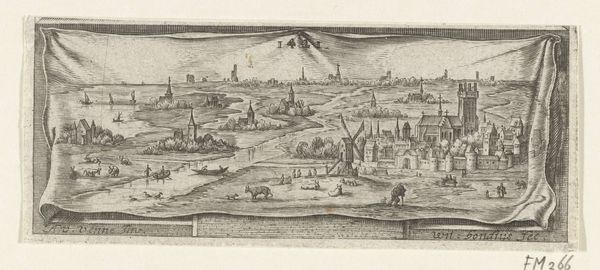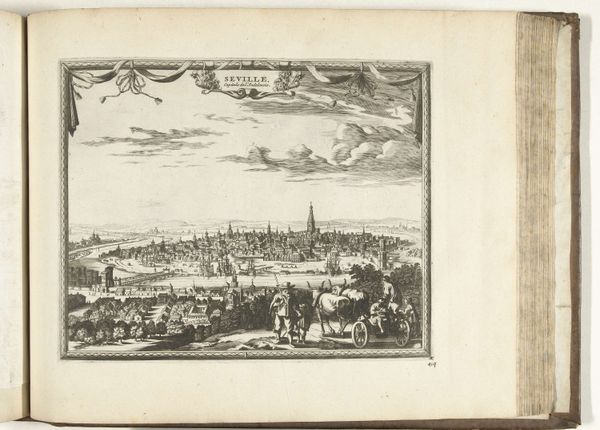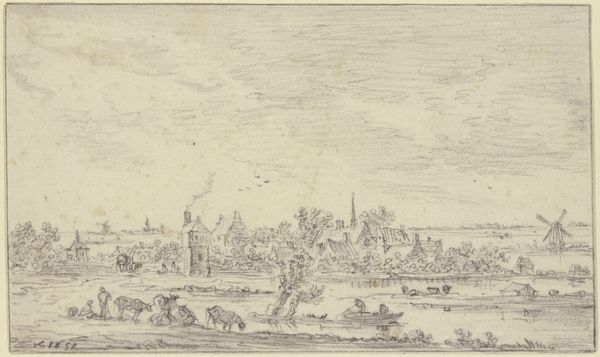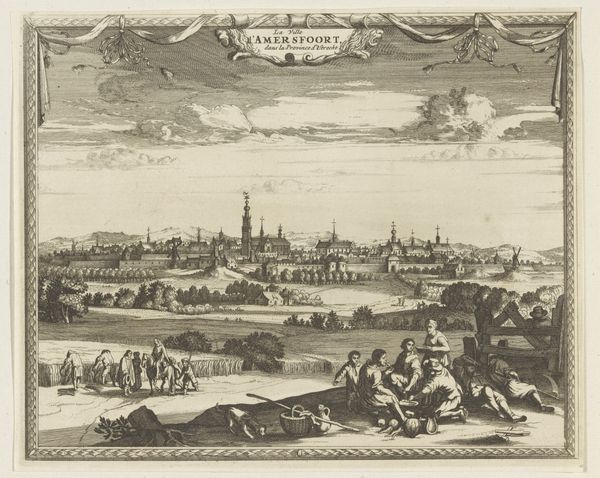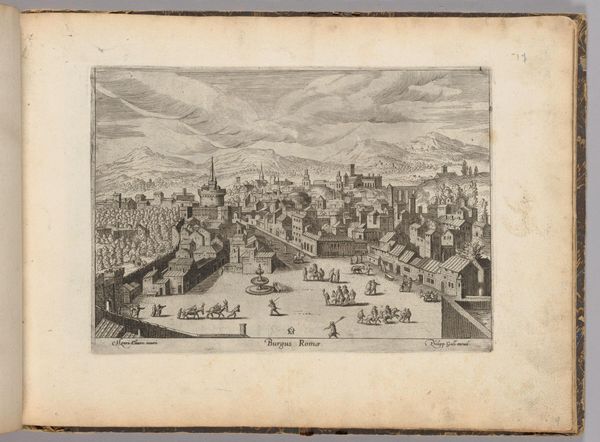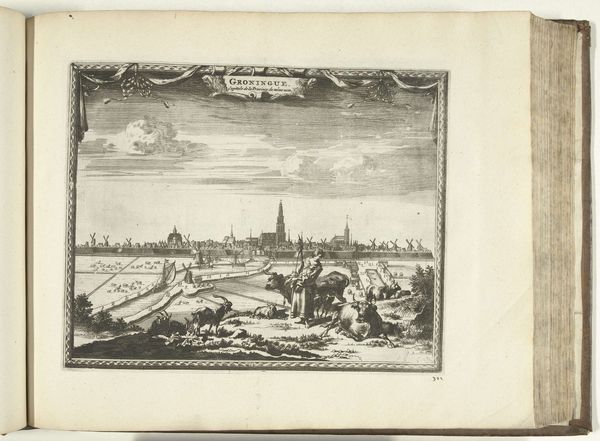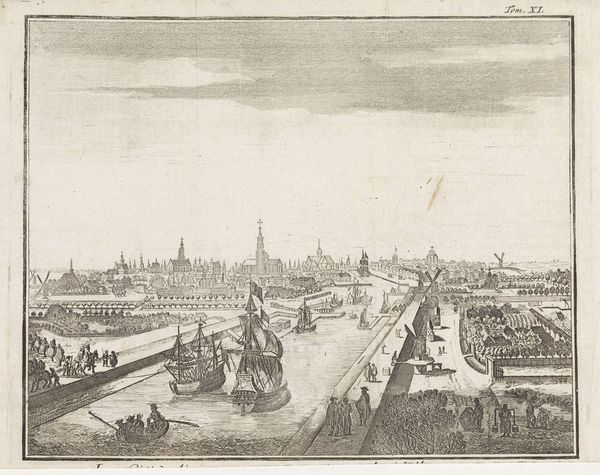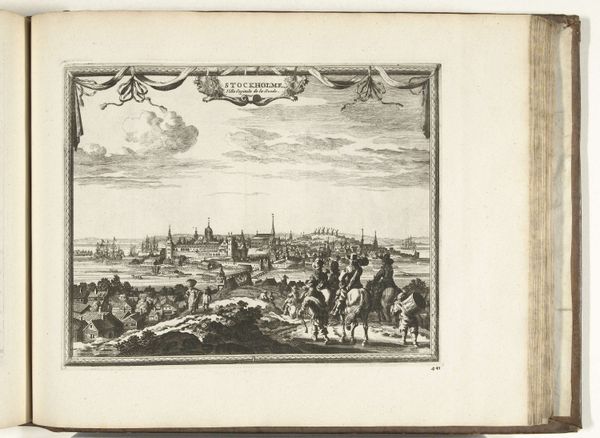
print, engraving
#
dutch-golden-age
# print
#
pen sketch
#
landscape
#
cityscape
#
engraving
Dimensions: height 135 mm, width 230 mm
Copyright: Rijks Museum: Open Domain
This is Gaspar Bouttats' "Gezicht op Wesel," an etching made in the late 17th century. At first glance, the intricate linework captures the city, using precise strokes to define architectural forms and fortifications. The composition is divided into distinct horizontal layers, from the foreground figures to the detailed cityscape and the distant horizon. Notice how Bouttats uses line to create a sense of depth and structure. The detailed rendering of Wesel’s architecture and the landscape invites us to consider the interplay between representation and spatial understanding. The etching employs a semiotic system, where each element, from the fortifications to the figures, functions as a sign within the larger narrative of the city's identity. The contrast between the structured urban space and the dynamic landscape prompts reflection on the relationship between human order and natural form. The lines create not only a visual representation but also a dialogue about space, power, and the evolving perception of urban environments in the early modern period.
Comments
No comments
Be the first to comment and join the conversation on the ultimate creative platform.

